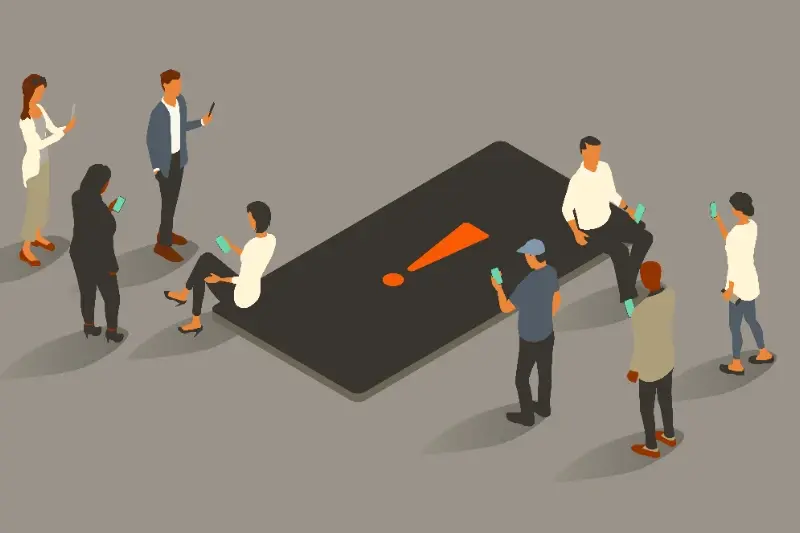Why Most Apps Get Their Pricing Strategy Completely Wrong
Nine out of ten mobile apps fail to make money. Not because they're poorly designed or lack features, but because they get their pricing strategy completely wrong from day one. After working with hundreds of app developers over the years, I've watched brilliant ideas crash and burn simply because someone made the wrong call about how to charge for their product.
The problem isn't that there's no demand for mobile apps—quite the opposite. People are spending more on apps than ever before. The issue is that most developers are making the same fundamental pricing mistakes, over and over again. They're copying what they think works without understanding why it works, or more importantly, whether it actually works for their specific situation.
The best app in the world won't succeed if people can't figure out why they should pay for it
What makes this particularly frustrating is that these monetisation mistakes are completely avoidable. The difference between an app that generates thousands and one that generates millions often comes down to a few key pricing decisions. Small changes that can have massive impacts on revenue. Getting your pricing strategy right isn't just about making more money—it's about creating a sustainable business that can grow and adapt over time.
The One-Size-Fits-All Trap That's Killing Your Revenue
I see this mistake constantly when reviewing pricing strategies for new clients—they've picked one price and assumed it'll work for everyone. A basic app costs £2.99, end of story. But here's what's happening: you're losing money from people who would happily pay more, and you're shutting out users who can't stretch to that price point.
Think about Netflix for a moment. They don't just offer one subscription tier; they've got multiple options because they know their audience isn't uniform. Some people want 4K streaming on multiple devices, others just want basic access on their phone. The same logic applies to your app.
Why Different Users Want Different Things
Your app users aren't all the same person with identical needs and budgets. A freelance designer might use your productivity app occasionally and prefer a lower-cost option, whilst a large agency team needs premium features and can justify higher costs. When you only offer one pricing option, you're essentially saying "tough luck" to everyone who doesn't fit that exact profile.
The Revenue You're Missing
Single-tier pricing creates two problems that directly impact your bottom line:
- Lost premium revenue from users willing to pay more for advanced features
- Missed opportunities with price-sensitive users who'd pay something, just not your set price
- Reduced user acquisition because you can't test different price points
- Lower lifetime value since you can't upsell existing users
The apps making serious money understand this—they've moved away from rigid pricing towards flexible models that capture value from different user segments. Your pricing strategy should reflect the reality that your users have varied needs, not pretend they're all identical.
Why Free Apps Often Make More Money Than Paid Ones
This one catches a lot of people off guard. You'd think charging upfront would be the straightforward path to making money from your mobile app, but the numbers tell a completely different story. Free apps consistently outperform paid ones when it comes to revenue—and by quite a margin too.
The reason is simple: volume. When you remove that initial price barrier, far more people will download your app. We're talking about download rates that can be 10 times higher than paid apps. Once you've got those users through the door, you can monetise them through advertising, in-app purchases, or premium features.
Think about it from a user's perspective. They're scrolling through the app store, they see something interesting, but it costs £2.99. They pause, think about it, maybe bookmark it for later—and then forget about it completely. Remove that price tag and they'll download it straight away.
The key is having a solid monetisation strategy in place. You need to know how you're going to make money from those free users before you launch. Whether that's through ads, premium subscriptions, or selling additional features, the plan needs to be there from day one.
Start with a freemium model where basic features are free but premium functionality requires payment. This lets users experience your app's value before they commit to spending money.
The Hidden Psychology Behind What People Actually Pay For
After working with hundreds of app developers over the years, I've noticed something interesting about how people actually decide to spend money on apps. It's not what you'd expect—and it's definitely not what most developers think it is.
People don't pay for features. They pay for feelings. When someone downloads a productivity app, they're not buying task management; they're buying the feeling of being organised and in control. When they purchase a fitness app, they're not paying for workout routines—they're investing in the person they want to become.
What Drives Real Purchase Decisions
The psychology behind app purchases comes down to three main drivers that we see time and again:
- Time saving (the feeling of having more hours in their day)
- Status enhancement (looking good to others or feeling better about themselves)
- Problem elimination (removing a specific pain point from their life)
- Entertainment value (genuine enjoyment or escapism)
This is why apps that solve emotional problems often outperform those that just solve functional ones. The most successful apps we've built understand this distinction—they position themselves around the emotional outcome, not the technical solution. When you price your app, you're not pricing features or development time; you're pricing the value of that emotional transformation.
Subscription Fatigue and When It Really Makes Sense
People are getting tired of subscriptions. I see it all the time when working with clients—they want to jump on the subscription bandwagon because it looks like easy money, but they haven't thought about whether their mobile app actually deserves a monthly payment.
Your users already pay for Netflix, Spotify, their gym membership, and probably a dozen other services they've forgotten about. Adding another subscription to their pile needs to be justified, not just hoped for.
The best subscription apps solve a problem that keeps coming back, not one that gets solved once and then forgotten about
Subscriptions work brilliantly for apps that provide ongoing value—think productivity tools that sync across devices, apps with constantly updating content, or services that require server costs to maintain. But slapping a monthly fee on a simple utility app or a one-time solution? That's a recipe for angry reviews and quick uninstalls.
The Real Test
Ask yourself this: would you genuinely miss your app if it disappeared tomorrow, or would you just find an alternative? If users can live without your app for a week without noticing, they definitely won't pay for it monthly. The apps that succeed with subscriptions become part of people's daily routines—they're not just nice to have, they're genuinely useful on a regular basis.
The Biggest Mistake Everyone Makes With In-App Purchases
I've watched countless apps shoot themselves in the foot with this one. They dump every possible purchase option into their app store listing and wonder why nobody's buying anything. It's like walking into a restaurant with a 20-page menu—you just freeze up and can't decide.
The mistake? Offering too many in-app purchase options right from the start. New users open your app, see fifteen different coin packages, three premium subscriptions, and five cosmetic bundles. Their brain shuts down. Choice paralysis kicks in, and they buy nothing at all.
What Actually Works Better
Smart developers start with just two or three purchase options. Maybe a small coin pack, a larger one, and one premium feature. That's it. Once users are comfortable and engaged, then you can introduce more options gradually.
The best in-app purchase strategies follow this pattern:
- Start with maximum three purchase options
- Make the middle option the most attractive (not the cheapest or most expensive)
- Introduce new purchases after users have been active for at least a week
- Remove options that nobody uses after 30 days
Less choice means more sales. It sounds backwards, but the data doesn't lie—apps with fewer initial purchase options consistently outperform those with extensive catalogues.
Why Your Competition's Pricing Strategy Might Be Wrong Too
Looking at what your competitors charge for their mobile app seems like the logical starting point for setting your own prices, doesn't it? Well, that's what most people think—and that's exactly the problem. When everyone copies everyone else's pricing mistakes, those mistakes become industry standards.
I've watched entire app categories fall into this trap. One fitness app launches with a £9.99 monthly subscription, so the next ten apps in that space all price themselves at £8.99 or £10.99. Nobody questions whether subscription pricing even makes sense for their particular app functionality. They're all just following the leader off the same cliff.
The Real Problem With Competitor Analysis
Your competitors might be struggling with their monetisation just as much as you are. That premium app charging £4.99 upfront? They could be making less money than the free app with smart in-app purchases. The subscription-based app everyone's copying might be hemorrhaging users after the first month.
Research what your competitors are charging, but focus more on researching what your actual users are willing to pay through surveys and interviews.
The most successful apps I've worked on found their pricing sweet spot by testing different approaches, not by copying what seemed to work for others. Your app serves different users with different needs—and different spending habits.
- Download competitor apps and track their pricing changes over time
- Read their app store reviews for pricing complaints
- Check their app store rankings after pricing changes
- Look at their marketing messages about value, not just price
Testing Your Way to the Perfect Price Point
Right, let's talk about the bit that most developers either skip completely or get completely wrong—testing your pricing. I've worked with countless clients over the years who've just picked a price out of thin air and hoped for the best. That's not a strategy; that's wishful thinking!
The truth is, you won't know what people will pay until you actually test it. Start with A/B testing different price points with small groups of users. Try three different prices—one low, one medium, one higher than you think people will pay. You might be surprised by what works.
The Smart Way to Test Pricing
Launch with a simple pricing structure first. Don't overcomplicate things with five different tiers and complicated features. Test one price point for a few weeks, then adjust based on actual user behaviour—not what they say they'll do in surveys.
Watch your conversion rates like a hawk. If you're getting lots of downloads but nobody's buying, your price might be too high. If everyone's buying immediately without hesitation, you're probably leaving money on the table. The sweet spot is usually somewhere in the middle where people think about it for a moment before purchasing.
Most importantly, don't be afraid to change your pricing. Apps aren't like physical products—you can adjust prices quickly based on what the data tells you.
Conclusion
Getting your mobile app pricing strategy right isn't just about picking a number and hoping for the best—it's about understanding your users, testing relentlessly, and avoiding the common traps that destroy revenue. I've seen too many brilliant apps fail because their creators made basic pricing mistakes that could have been easily avoided.
The biggest lesson? Stop copying what everyone else is doing. Your competition might be getting it completely wrong, and following their lead will only hurt your bottom line. Instead, focus on what your users actually value and be willing to experiment with different approaches.
Whether you choose freemium, subscription, or one-time payments, the key is matching your pricing model to your app's core value proposition. Test different price points, watch user behaviour closely, and don't be afraid to make changes when something isn't working.
Most importantly, remember that pricing is never set in stone. The mobile app market changes constantly, and your monetisation strategy should evolve with it. Keep testing, keep learning, and keep your users at the centre of every decision you make about pricing.
Share this
Subscribe To Our Blog
You May Also Like
These Related Stories

8 Mobile Game Monetisation Strategies That Actually Work

Why 90% Of Users Abandon Apps During Onboarding Process





